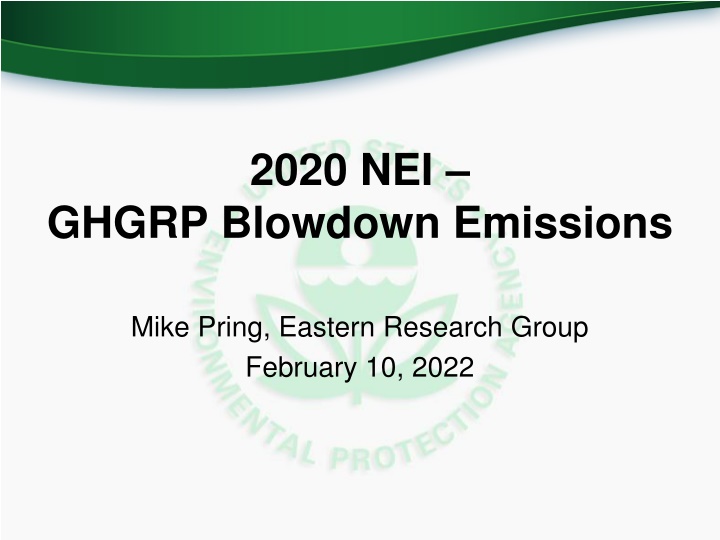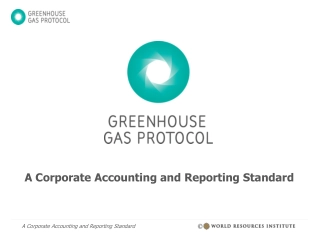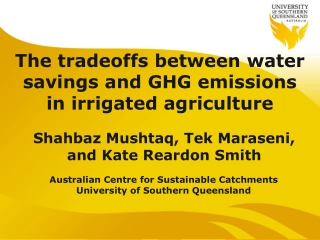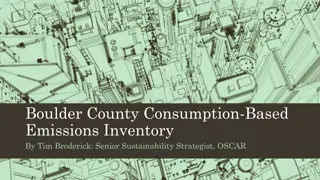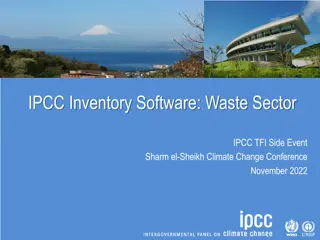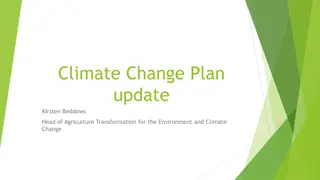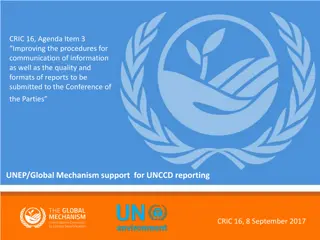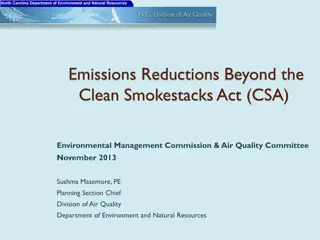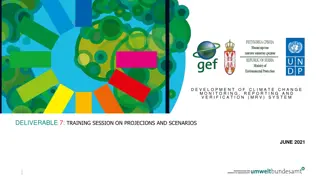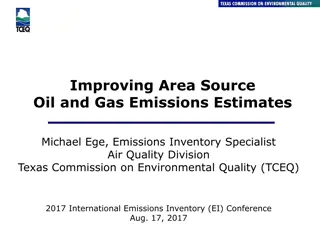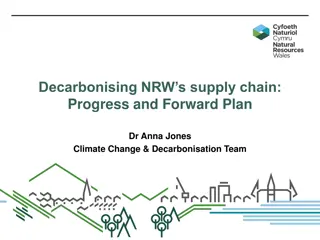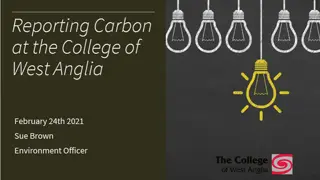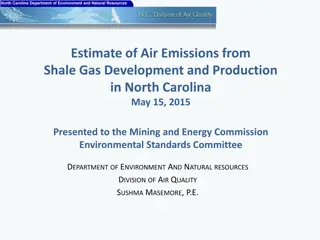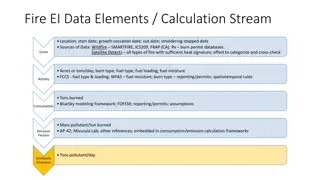GHGRP Blowdown Emissions Reporting
This content discusses the GHGRP requirements for reporting blowdown emissions in various industry segments, along with the equipment types and methodology used. It also outlines the steps involved in the NEI Blowdown Methodology, based on the Utah prototype methodology.
Download Presentation

Please find below an Image/Link to download the presentation.
The content on the website is provided AS IS for your information and personal use only. It may not be sold, licensed, or shared on other websites without obtaining consent from the author.If you encounter any issues during the download, it is possible that the publisher has removed the file from their server.
You are allowed to download the files provided on this website for personal or commercial use, subject to the condition that they are used lawfully. All files are the property of their respective owners.
The content on the website is provided AS IS for your information and personal use only. It may not be sold, licensed, or shared on other websites without obtaining consent from the author.
E N D
Presentation Transcript
2020 NEI GHGRP Blowdown Emissions Mike Pring, Eastern Research Group February 10, 2022
GHGRP Blowdown Emissions GHGRP requires the following industry segments to report blowdown emissions: Onshore petroleum and natural gas gathering and boosting Onshore natural gas transmission compression Onshore natural gas processing LNG import and export equipment Onshore natural gas transmission pipelines (53% of total emissions) Category does not include well blowdowns , which are covered under the Liquids Unloading category 2/19/2025 U.S. Environmental Protection Agency 2
GHGRP Blowdown Emissions Emissions are reported for the following equipment types: Compressors (~22% of total) All other pipeline segments with a physical volume greater than or equal to 50 ft^3 (15% of total) Pipeline integrity work (14% of total) Traditional operations or pipeline maintenance New construction or modification of pipelines including commissioning and change of service Facility piping Equipment replacement or repair All other equipment with a physical volume greater than or equal 50 ft^3 2/19/2025 U.S. Environmental Protection Agency 3
GHGRP Blowdown Emissions Emissions reported for the following equipment types (cont.): Emergency shutdowns Pipeline venting Pig launchers and receivers Operational precaution during activities Emergency shutdowns including pipeline incidents Scrubbers/strainers Pipe abandonment 2/19/2025 U.S. Environmental Protection Agency 4
NEI Blowdown Methodology Based on Utah prototype methodology used for 2017 NEI Utah DAQ (Greg Mortensen, Ryan Grant) EPA Region 8 (Cindy Beeler, Aaron Zull) Methodology presented during May 14, 2020 NOGC meeting https://vibe.cira.colostate.edu/ ogec/Archive 2/19/2025 U.S. Environmental Protection Agency 5
NEI Blowdown Methodology Step 1 - 2020 GHGRP blowdown data (CH4) extracted from Envirofacts Step 2 - Facility-level data rolled up to the basin level Step 3 - Basin-level emissions then apportioned to the county level based on gas/CBM well counts Steps 4/5 - County-level CH4 emissions used to estimate VOC and BTEX emissions NEI Oil and Gas Tool gas well Pneumatic speciation data Step 6 categorize emissions under SCC 2310021801 (Pipeline Blowdowns and Pigging) 2/19/2025 U.S. Environmental Protection Agency 6
NEI Blowdown Methodology Refer to memorandum Analysis of GHGRP data to estimate blowdown emissions for the 2020 NEI and supporting spreadsheet documentation 2/19/2025 U.S. Environmental Protection Agency 7
NEI Blowdown Results 271,469 MT CH4 33,966 from offshore or missing FIPS sources 48,599 TPY VOC 207 TPY BTEX 2/19/2025 U.S. Environmental Protection Agency 8
NEI Blowdown Results Benzene (tpy) 26,035 38.10 4,020 3.71 3,671 9.55 2,659 4.55 Pennsylvania 1,905 8.65 West Virginia 1,557 7.06 New Mexico 1,348 - Louisiana 1,339 5.10 Wyoming 1,305 11.84 Ethylbenzene (tpy) 0.82 0.11 0.48 0.53 0.49 0.40 - 0.03 0.57 Toluene (tpy) 14.70 1.98 11.66 4.27 7.71 6.29 - 0.89 1.38 Xylene (tpy) 12.44 1.44 3.63 1.84 2.19 1.79 - 1.08 3.12 State VOC (tpy) Texas Oklahoma Colorado Kansas 2/19/2025 U.S. Environmental Protection Agency 9
NEI Blowdown Results State Blowdown VOC (tpy) Tool VOCs (tpy) % Addition 26,035 4,020 3,671 2,659 1,905 1,557 1,348 1,339 1,305 Texas Oklahoma Colorado Kansas Pennsylvania West Virginia New Mexico Louisiana Wyoming 859,862 137,216 65,367 53,235 121,985 79,692 220,327 56,920 81,574 3.0% 2.9% 5.6% 5.0% 1.6% 2.0% 0.6% 2.4% 1.6% 2/19/2025 U.S. Environmental Protection Agency 10
